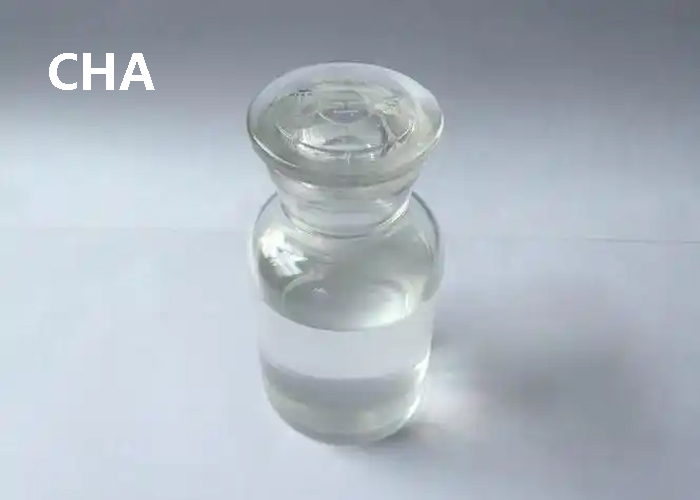Comprehensive Guide to Cyclohexylamine (CHA) Maintenance and Application in Water Treatment
Cyclohexylamine (CHA) is a key intermediate chemical widely used in water treatment, pharmaceuticals, rubber chemicals, and corrosion inhibitors. In industrial water treatment systems, Cyclohexylamine plays a vital role in preventing corrosion within boilers and steam pipelines by neutralizing acidic components such as carbonic acid. To ensure the stable and efficient use of CHA, regular maintenance and correct handling are crucial.
1. Understanding Cyclohexylamine CHA
Cyclohexylamine CHA is a colorless, flammable liquid with a strong ammonia-like odor. It is highly soluble in water and alcohol, making it ideal for water treatment applications. The compound’s ability to form volatile salts allows it to protect both condensate and feedwater systems from corrosion.
Proper understanding of the physical and chemical properties of Cyclohexylamine is essential for safe operation and maintaining treatment efficiency.
2. Storage and Handling
Store Cyclohexylamine in tightly sealed containers away from heat, flames, and direct sunlight. Because CHA is volatile and reactive with strong oxidants, ensure good ventilation during storage and use. Avoid contact with acids and oxidizing agents to prevent hazardous reactions. Regular inspection of storage tanks and pipelines prevents leaks or contamination that could affect water treatment quality.
3. Maintaining System Efficiency
In water treatment, consistent dosage and monitoring of Cyclohexylamine concentration are key. Too little CHA may lead to incomplete neutralization of acids, causing corrosion; too much may increase pH beyond safe levels. Therefore, regular testing of feedwater and condensate helps maintain optimal CHA levels for protection and performance.
4. Equipment Cleaning and Calibration
Pumps and dosing systems used for Cyclohexylamine injection should be cleaned periodically to prevent blockages and residue buildup. Calibration of dosing equipment ensures accurate CHA feed rates. This helps sustain effective water treatment results and minimizes chemical waste.
5. Monitoring and Safety Measures
Continuous monitoring systems should record flow rate, pH, and conductivity to detect irregularities in Cyclohexylamine dosage. Proper personal protective equipment (PPE)—including gloves, goggles, and respirators—must be worn when handling CHA to avoid inhalation or skin contact. Training operators on emergency handling procedures is equally important for safe water treatment operations.
6. Regular System Inspection
Inspect the water treatment system regularly for corrosion, scaling, or deposits. These issues often indicate improper Cyclohexylamine application or dosing imbalance. Routine maintenance helps prevent unexpected shutdowns and prolongs system life.
7. Environmental Considerations
While Cyclohexylamine is an effective corrosion inhibitor, it must be managed responsibly. Prevent CHA discharge into the environment by ensuring proper waste handling and compliance with environmental standards. Sustainable water treatment practices can significantly reduce ecological impact.
Conclusion
Through correct usage, inspection, and maintenance, Cyclohexylamine (CHA) can deliver long-term corrosion protection and operational stability in water treatment systems. Proper handling not only ensures safety but also enhances plant efficiency and reliability. As an essential agent in modern water treatment, Cyclohexylamine continues to play a critical role in achieving cleaner, safer, and more sustainable industrial water management.